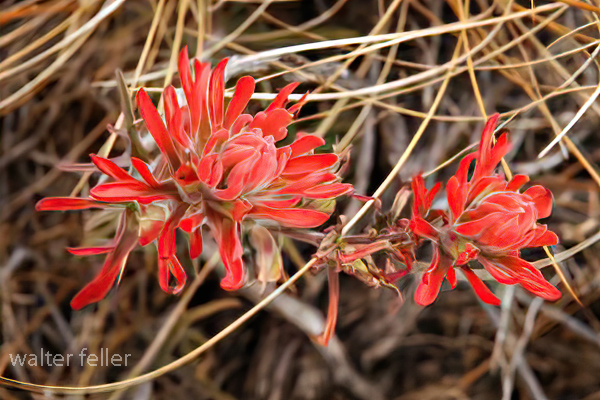Desert Indian Paintbrush
Castilleja angustifolia
Desert Indian Paintbrush is a striking wildflower known for its vivid, flame-like colors that brighten up dry, rugged landscapes. It’s native to the deserts and dry mountain slopes of the American West and is a familiar sight during spring bloom in places like the Mojave Desert.
Appearance:
This perennial or short-lived perennial grows 6 to 18 inches tall. What most people think are the flowers are actually colorful bracts—usually bright red or orange—that surround the small, less noticeable true flowers. The leaves are narrow and often sparsely hairy.
Habitat:
Found in desert flats, sagebrush scrub, and rocky hillsides. It prefers sandy or gravelly soils and full sun.
Bloom Time:
Typically blooms from March to June, depending on elevation and rainfall.
Pollinators:
Visited by hummingbirds, bees, and butterflies. Like other paintbrushes, it's a hemiparasite—it taps into the roots of nearby plants to supplement its own nutrients.
Note:
Desert Indian Paintbrush is tough, colorful, and beautifully adapted to dry country. Its bold bracts make it one of the highlights of any desert wildflower season.